After we moved to Omaha in the mid-1980s, my family landed in the Miller Park neighborhood. Relying on social services, we gravitated towards Pearl Church. Their in-house nonprofit was called United Ministries of NorthEast Omaha, or UMNEO. Along with that, Omaha’s Habitat for Humanity office was housed there, and there were activist members of the congregation determined to live their faith in action. I spent years growing up there, and I want to share the history of this once-beautiful place that rests so well within my heart. This is the history of Pearl Memorial United Methodist Church in North Omaha.
Founding a Church

In the 1890s, a group of Methodists began worshiping in the upper room of Lane Drug at the corner of 24th and Ames Avenue.
The First Church

Determined to become a permanent fixture in the community, the congregation built their first church in 1905 at North 24th and Larimore. Its first pastor was Reverend George A. Luce. The Methodist church in general admired Luce for his tenacity and determination to grow the congregation, and he did just that. In addition to the building, he rallied members to recruit others into the flock, and expanded education programs while encouraging social activities.
Luce was alternately called “Brother Luce” and “Dr. Luce” as well as Reverend. Rev. Luce was also the largest preliminary benefactor to the congregation, and named the church after his wife’s maiden name, which was Pearl.
New Church

The congregation grew rapidly, but Luce had to retire in 1907. A year later, they commissioned architectural drawings for a new church that was to be built at North 24th and Browne Streets. Even though they chose these plans, the congregation ended up building their new church elsewhere.
By 1916, the new Pearl Memorial M.E. Church was being built at North 24th and Ogden Avenue. Designed by Norman R. Brigham, it reflects the grand American brick church tradition that emerged between the 1880s and 1920s.
For a year between the old church being sold and the new church being completed, the congregation met in a temporary building called the Pearl Memorial Tabernacle. It was a wooden structure at N. 24th and Camden Avenue, and they were there from February 1917 to March 1918.
The congregation officially moved into their new church at 2319 Odgen Avenue on March 1, 1918.
The original building was built atop a massive basement with 25-foot tall ceilings. The rooms below included a full gymnasium with observation decks and locker rooms, as well as a fold-out stage from the southern wall. There were two Sunday School rooms and a nursery in the basement, as well as a “Men’s and Boy’s Club” in the northern end of the church.
On the main floor, the massive sanctuary was framed in exposed oak rafters, beautiful woodwork throughout the nave and around the chancel at the front of the sanctuary, as well as the alter, the oak pews and more. There is a grand choir loft, a four-story bell tower and a choir room, too. The tolling bells were an audible landmark in the life of the Miller Park neighborhood.
There was also a sub-basement with for the furnace and boiler.
New Addition
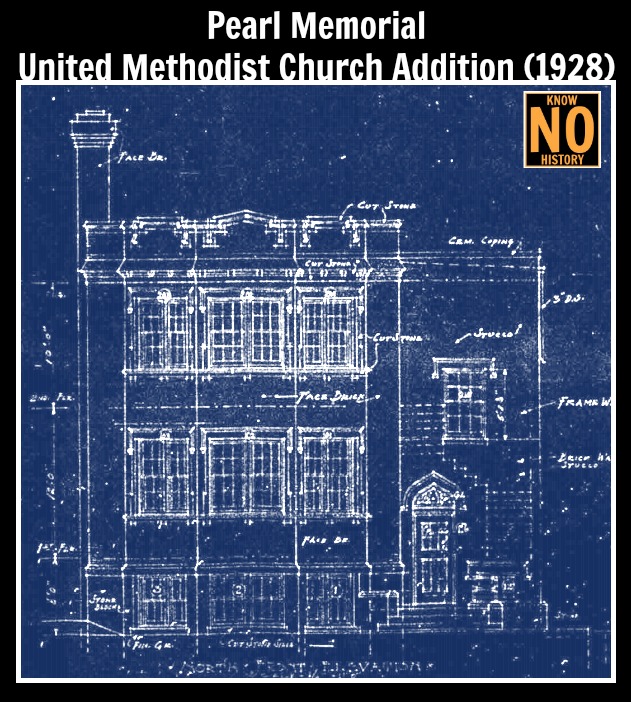
By 1928, the congregation expanded beyond the original building’s capacity, so they built a new wing for church education. A four-story rectangular structure, it was built along the east side of the church. It held six classrooms, a large fellowship hall and the pastor’s office. Stairs wound around the whole building, and on the exterior it was tied together with identical brickwork.
By this point, Pearl was an essential fixture in the community. Along with Trinity Methodist Episcopal Church in Kountze Place; St. John’s African Methodist Episcopal; Cleves Memorial Colored Methodist; and Grove Methodist Episcopal, Pearl demonstrated the strong presence of Methodism in North Omaha.
Maturing

Pearl Memorial rapidly became home to social, athletic, cultural and educational activities for families, including children and youth, throughout North Omaha.
The church hosted everything usual and necessary for a neighborhood church, including weddings and funerals, Sunday schools and vacation Bible schools, choirs and Bible studies. For more than 50 years, the congregation was healthy and whole. They supported a full-time minister and his home, as well as a variety of staff doing the work of the church.
Open to the neighborhood throughout the week, the church hosted skate nights and dances in it’s large gymnasium. There were regular basketball and baseball teams that played in church leagues across the city. Their early Boy Scout Troop 29 awarded more than 100 Eagle Scout medals, and their Girl Scout unit was prolific and popular too. Sunday school classes were packed to the rafters, and multiple Sunday services were held for decades to accomodate the burgeoning congregation.
Pearl was important beyond the neighborhood, too. With a full-size gym, it regularly hosted tournaments and special athletic events. The sanctuary was busy, too, hosting special services, religious performances including singers, choirs, guest preachers and musicians of all sorts. The organ in the church was the best quality, and people loved the feeling of the soaring ceiling.
However, there was an omninous reality on the horizon.
White Flight
The Miller Park neighborhood finished filling in with houses after World War II. Soldiers returning from the war moved into duplexes, large houses and other homes throughout the neighborhood. By the 1960s, though, that trend wasn’t just ending – it was reversing.
White people in Omaha don’t want to live by African Americans. By the 1960s, they’d been fed hype by the city’s media for at least 50 years about Blacks being violent, unfriendly, or otherwise unacceptable neighbors. North Omaha had suffered the scourge of this racism since the 1919 lynching of Will Brown, when bankers, real estate agents, insurance brokers and house owners first colluded to ensure African Americans didn’t move out of the Near North Side neighborhood. However, when the privelege of white people to segregate by skin color was taken away by the Civil Rights Act, Blacks began moving northwards and westwards into better housing. This led to white flight.
White people wanted so badly to stay away from living by Blacks that they simply packed up their entire houses and moved in droves away from the neighborhoods they or their parents had developed just a generation earlier. First they moved from the area between Lake and Cuming from N. 14th to N. 30th. Then white people moved out of Kountze Place, and then Saratoga. White flight in the Miller Park neighborhood began in the 1960s.
In the 1970s, the Omaha District saw the problems facing Pearl Church. Enrollment plummeted while west Omaha’s United Methodist congregations were growing, and they knew something had to happen. In the meantime, the tiny congregation in East Omaha called Asbury was seen as failing, too. It was originally founded in 1916 by a Methodist deaconness who hustled to establish the congregation. She earned enough support for a building to get built and have a minister assigned. However, in the 1970s the population there couldn’t support a minister, so the District’s superintendent merged Pearl and Asbury as a single parish with one minister. They remained so until the congregation folded.
By the 1980s, most young white families were entirely gone and many of the older residents were moving too. Pearl Church was regarded as one of the last gathering places for these old-timers, and when they moved on…
MY Pearl Church

In the meantime, families like mine needed help. We’d moved to the Miller Park neighborhood because it was affordable, and my mom wanted to live where there were sidewalks, streetlights and neighbors. With dire circumstances behind us, Pearl Church provided us a food pantry, activities for us kids, and a place to meet neighbors. It turned out to be more important than all that, too.
From the 1970s through the 1990s the church hosted a variety of sports for youth in the local community, as well. In the 1980s the church renovated a kitchen in the basement to become a commercial-style cooking area that was designed to provide training to local job-seekers. Sunday school drew neighborhood kids, as well as commuters from western neighborhoods who were coming back to worship where they were raised. Summer Bible camps filled the buildings on some days, while a variety of programming by UMNEO did the same. I started attending Pearl in earnest in 1989, joining the youth group, talking in front of the congregation and attending church leadership meetings when allowed. I even asked to become a trustee, but was denied the opportunity. David Porter, Margaret Gilmore, Rev. Steve Eldred and others guided me deftly in those early years, and I followed easily.
My mom, then known by her married name as Charlette Sasse, began working at UMNEO as a VISTA volunteer in 1990. She established after school and summer programs for neighborhood kids, including her popular program called Jacob’s Ladder. Opening the doors to the gym and sharing cookies and safe space, she became appreciated by the neighborhood kids. David Porter was the executive director of UMNEO then, and to me he always seemed to be on the verge of saving the world.
In the late 1980s, David brought Idu Maduli to lead a drama program in North Omaha called “You’re the Star!” Inviting me to join him as a teacher, I was hired for three summers to join him going around the community teaching kids in a few different settings about drama, and then supporting them as they put on plays of African parables.
I became very active at Pearl and beyond through the United Methodist Church’s leadership opportunities for youth. Singing in the youth choir, I helped teach Sunday school, preached my first sermon at Pearl, and enjoyed the operation of the church. Then, I was invited to help create a district newsletter for youth, and sent to attend state, regional and national U.M.C. youth activities as a youth representative. During these years, it was the old-timers at Pearl that told me the former glories of the Miller Park and Saratoga neighborhoods, and I soaked their stories up like a sponge.
Troop 508
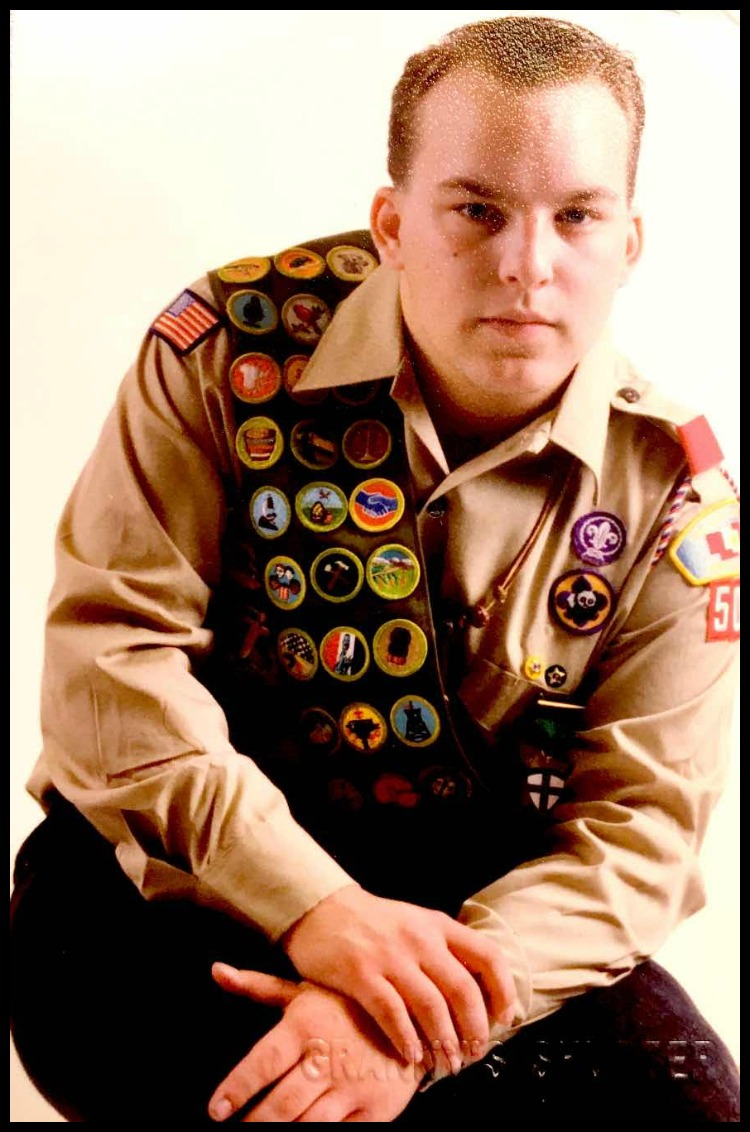
Around 1988, my dad founded a new Boy Scout troop at Pearl Church for my brother and I to join. Troop 508 turned out to be a major influence in my life, as my buddies and I took over the neighborhood, became masterful outdoorsmen and made a lot of memories we treasure still more than 20 years later. First, it was my Dad and John Stokke who brought in Ian and Shawn, then Joe and Tracy and Marlin and I.
After a while, Bill Bolte and Jerry Bostwick and Chuck Livengood led our troop and I made friends with Jimmy and Matt. Nick and Jaimie and Ernesto and Chris Melchor all hung in there for a while, and we all had great times. The Umoja District was ours, and the rest of the Boy Scouts at Camp Cedars and other places had no idea what to do with us. “Ragtag” wasn’t the right word, but “Bad News Bears” might’ve fit our troop well. We had fun and learned a lot. Charlie Goff, Von Trimble, Sr. and other mentors helped me a lot, and I think my friends liked it, too.
The canvas tents, gigantic plywood “pack kitchens,” and the guy pointing a gun at me so he could play more basketball were all worth it. I’m deeply in debt to my Boy Scout family at Pearl that raised me right.
Growing Up
As life goes, things changed. When I was 17, Rev. Jamie Norwich McLennan came to Pearl. I grew up a lot in those next few years, earning my Eagle Scout award at Pearl and graduating from North High in 1993. That fall, I went to Nebraska Wesleyan intending to become a Methodist minister. The idea of having a captive audience for a few hours every week appealed to me, as did the good works I’d seen the ministers I saw doing. The outcome of that journey is another story for a different place though.
Those were exhilarating years that set the trajectory of my life’s work since, and I remain forever grateful to Idu, David, Jamie and the rest of my Pearl family.
Closing
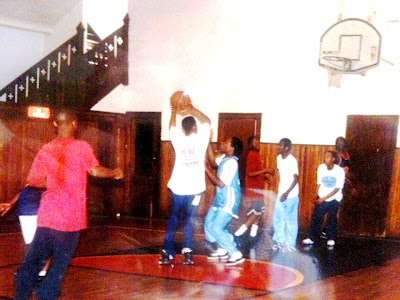
In 1994 and 95, I ran the youth programs my mom started at Pearl and expanded them a bit. My family moved away in 1995 though, and shortly after my programs closed and I moved away, too.
In the last decade of its existence, UMNEO became focused on housing programs to support North Omaha contractors getting business while supporting low-income families while they bought houses. The programs and activities at Pearl apparently dwindled though. The congregation continued dying off, and young people continued not coming back to the church.
In 2000, UMNEO closed its doors and soon after, Habitat for Humanity moved out of the building.
In the 2009, the church changed names from Pearl Memorial to Living Hope United Methodist Church. The Omaha District of the United Methodist Church closed Asbury Church in East Omaha and asked its members to go to the former Trinity U.M.C., now called the TRI-Community U.M.C. The 3 were Trinity, Pearl and Asbury. Although almost all the members from those congregations are now gone from the church, because of a strong minister at the helm, the TRI-Community church continues today.
At Pearl Church, a new African American U.M.C. congregation was attempted. It is called the Living Hope Church, but by 2012 they’d moved out of the former Pearl Church entirely. Today the building is owned by an entirely different denomination called the Apostolic Assembly of the Faith in Jesus Christ. The denomination is a Hispanic Pentacostal church, and operates hundreds of churches across the U.S.
Living Hope has a new worship center on North 30th Street and continues on.
You Might Like…
MY ARTICLES ABOUT THE MILLER PARK NEIGHBORHOOD: Miller Park | Miller Park Duplexes | 30th and Fort | 24th and Fort | Fort Street Grocery Store | 5901 North 30th Street | Pearl Memorial United Methodist Church | Mr. C’s | Fort Street Special School for Incorrigible Boys | Fort Omaha School | Fort Omaha | Fort Omaha Balloon School |
Related: 24th Street | Florence Boulevard
MY ARTICLES ABOUT HISTORIC CHURCHES IN NORTH OMAHA
GENERAL: Directory | Black Churches | Florence Churches
METHODIST: 17th Street | Pearl Memorial UMC | St. John’s AME | Bethel AME | Cleaves Temple | Ames Avenue | Trinity | Walnut Hill | 18th Street |
BAPTIST: Mount Moriah | Zion | Immanuel |
CATHOLIC: Holy Family | St. Benedict the Moor | St. John’s | Holy Angels | Sacred Heart | St. Cecilia | St. Therese
PRESBYTERIAN: Calvin Memorial | Hillside | First United | Covenant | St. Paul
EPISCOPALIAN: St. Phillips |
COGIC: New Bethel | Faith
LUTHERAN: Hope | St. Paul | Mount Olive
OTHERS: Mt. Calvary |
RELATED: St. Clare’s Monastery | Omaha Presbyterian Theological Seminary | North Omaha Catholic Schools | Black Churches | Florence Churches | Kountze Place Churches
Elsewhere Online
- Architect Norman Bingham’s biography
- Architectural drawings for the addition
- TRI Community Church
- Omaha Habitat for Humanity website
- “Growing Seeds through Youngtime” – A reflection on my time running youth programs at Pearl Church


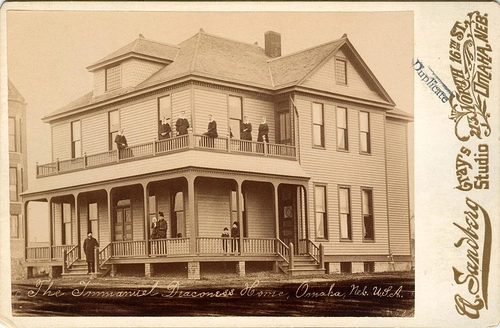

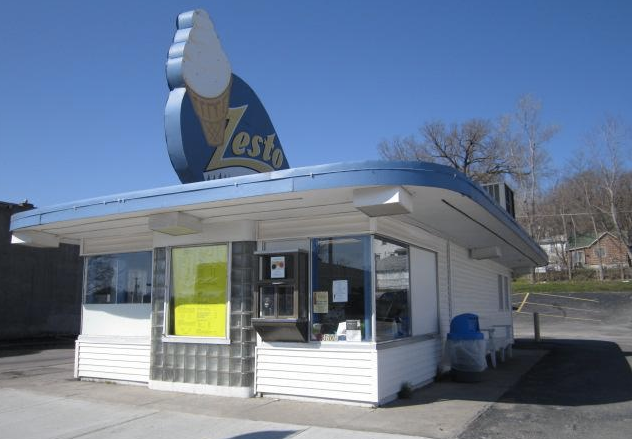
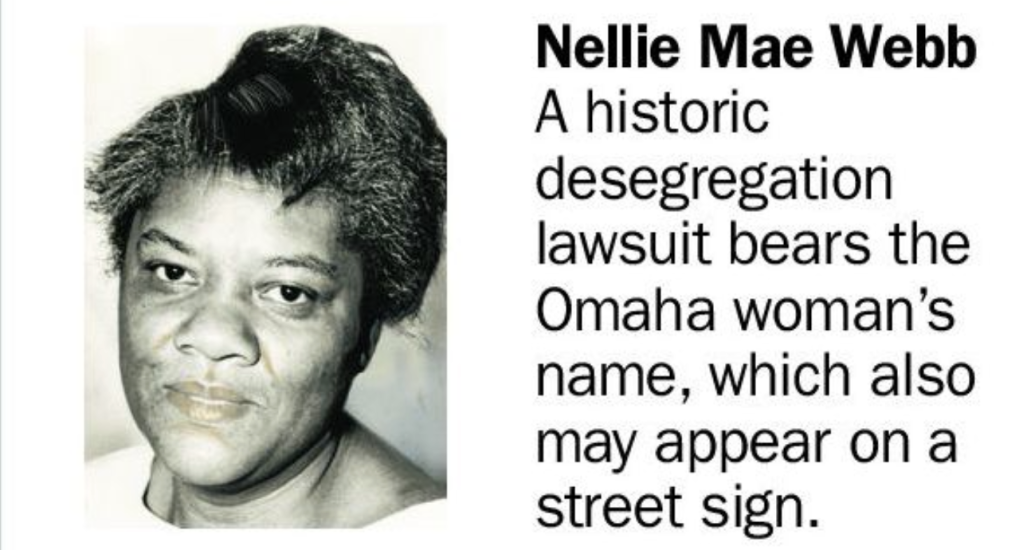
Leave a comment